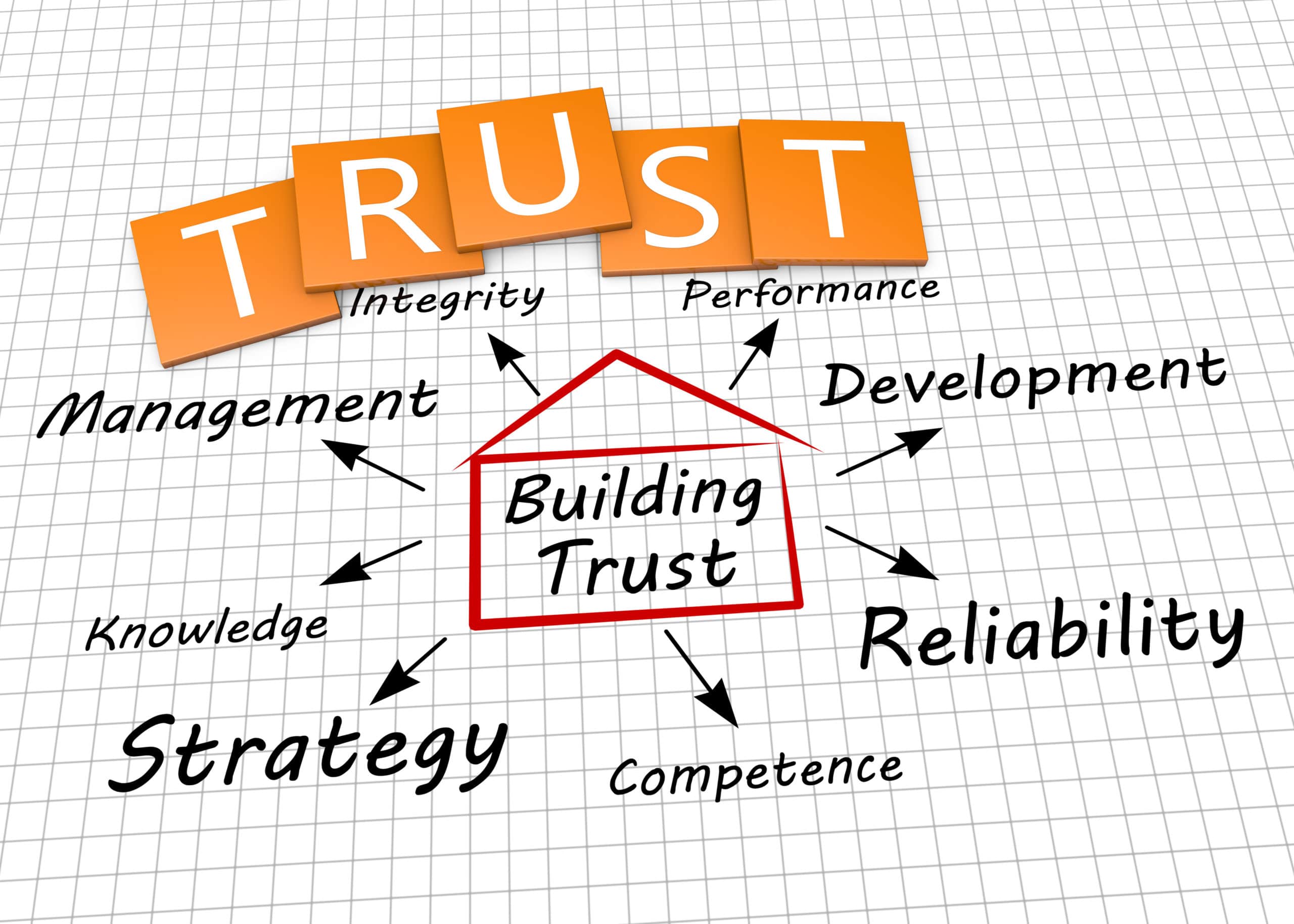Using Psychology to Sell More in your Expo Displays
Do you feel in your gut that you should be able to sell more in your expo displays but don’t know where to start? Trade shows can be big business for many companies.
They’re a fantastic way to showcase your wares to potential clients and customers, and take your business to the next level. If you have experience setting up a tradeshow booth, then you know what a lucrative opportunity it can be to reach hundreds or thousands of potential customers.
If you have experience at trade shows, but feel there is room for improvement, then perhaps it’s time to re-evaluate your approach. There are dozens of ways to sell and all of them point back to human psychology. It’s an area of event marketing that is worth exploring carefully.

A busy expo display
Psychology for Sales
In this article, we’re talking all about the various psychological techniques that you can use to increase your success at major trade shows. At its most basic level, all marketing is based on human psychology, so how about putting psychology to work in your trade show booths? It’s easy to get started. It’s extremely cheap, if not free, and it doesn’t require use of any sophisticated gadgets.
Here These are some psychological tools for selling. Each of them is validated by professionals who study human behavior and the brain. We’ve tailored each for exhibitors who want to get more out of their expo displays.
1. Create a Space Conducive to Selling
Spaces shape us as much as we shape them. Psychologists have long noted the importance and impact of space on how we work, live and, not surprisingly, buy and sell. The size and design of a retail space, for instance, influence buying decisions. That’s why retailers carefully plan their store’s flow and merchandise placement.
Successful exhibitors must also master the art of creating a great space for selling. They find key visual elements that will trigger positive actions from passersby and visitors. You can follow their example by designing your expo displays around consumer psychology.
First, design your booth around customers. It’s been said that if you plan a city around cards, you’ll get more cars. Likewise, in designing expo displays, exhibitors should devote every inch of booth design space to maximize user experience. Make yours attractive, friendly and engaging.
Consider how a potential customer might want to learn about your product, and how you can effectively communicate the problems solved by your product in an intuitive way. This should be kept in mind as you design the booth display, and guide your marketing decisions going forward.
Second, consider the use of colors that encourage people to buy. Yes, there is such a thing as color psychology. What colors are best for grabbing a viewer’s attention? Yellow is the most visible color. Light yellow is especially lively and stimulating. Red is another color that commands attention. It encourages action and promotes passion. There are other colors that correlate with specific responses. Use them to attract leads and increase sales.

Business Woman Showing Thumbs up in office presentation.
2. Leverage the Power of Non-Verbal Communication
Exhibitors who do well in their trade show displays are great stage actors. They know actions speak louder than words, and that gestures are as powerful and persuasive as speech.
Psychology has a lot to tell us about messages conveyed through non-verbal cues such as gestures, voice quality, posture, speaking style, eye contact and even clothing. All of these make or break a good first impression.
Consider, for instance, your posture while speaking to visitor in your expo displays. Learning forward to better listen to a him/her shows a positive sentiment during a conversation. Your visitor will appreciate it and will likely respond by buying an item. Are you confident about your product? People won’t respond to you if your body language says “go away” or “I’m not really convinced this product is great.”
Overall, it’s about creating a warm, welcoming environment for the customer, but also communicating to them that you are selling something worth buying. You want to show them that you are serious about the benefits of your product, and that requires actually believing in it yourself.
Here are other “booth behaviors” to consider when joining a trade show:
- Establish eye contact.
- Genuinely smile.
- Stand tall and be confident.
- Dress to impress your prospects.
- Avoid sitting and leaning.
3. Design for Persuasion Using Effective Marketing Materials
The problem with most expo displays is that not enough people care to look at them. They’re either plain ugly or too overwhelming. People, including your potential clients, are drawn to banner stands and other visual materials that blend aesthetics and usability. It really is similar to designing a landing page with an effective call-to-action.
Harry Levi Hollingworth, known for bringing psychology into the world of advertising, nailed down effective strategies when it comes to persuading people through visual media. For your marketing or advertising materials to be effective, Hollingworth suggests they have to accomplish the following goals:
- Attract a consumer’s attention
- Focus consumer’s attention on the message
- Ensure the consumer remembers the message
- Make consumer respond to the message or call-to-action
Take a look at your expo displays and your trade show graphics.
What are the main selling points and what are the weaknesses?
Make sure to ask someone outside your company for feedback. Deconstruct each of your marketing materials for “persuasion factors.” Emphasize selling words or action words. Use colors, sizes and images that attract prospects.
Often, the simple exercise of placing yourself in the shoes of your ideal customers helps.
If your banner stands and other trade show display materials aren’t good enough, do something about it. Work with a professional designer and a copywriter until you get it all right. Make sure your materials are consistent with your brand’s tone of voice and correlate with your trade show goals. It’s definitely a lot of work, and sometimes requires retooling your entire tradeshow display, but it is the path to sell more in your expo displays!

There are many ways to tell a story or appeal to people’s emotions at a trade show.
4. Use Stories to Build Trust OR Appeal to Consumers’ Emotions
Think buying is a rational process? Think again. No, don’t think. Take a look at your own buying behavior. When was the last time you bought something at a trade show or listened attentively to someone during a product demo? What was it that draw your attention? Stories. Your emotions were engaged. Something about the product or service fits into your story. At least during that hour.
There are many ways to tell a story or appeal to people’s emotions at a trade show. For one, you can set up an interactive booth by using iPads with pre-installed company apps. Or you can play a short company video in the background.
What about creating a theme for your expo displays? That can be a creative idea, but seasonal themes can backfire if everyone else decides to design based on the season.
The key is to use consumer behavior insights to effectively dress up your booth. Dig into your ideal customer profiles and spot common interests. Then appeal to those interests by giving them what they want to see, and designing your exhibit space accordingly. Make sure your booth mirrors their collective personality.
5. Leverage the Power of Freebies and Discounts
Do you ever wonder why companies pay to give people freebies and discounts? Psychology has the answer. It shows us the power of reciprocity, which is one of the six keys to influence according to Robert Cialdini’s classic book on persuasion and marketing, “Influence: The Psychology of Persuasion.”
Consumers who receive valuable freebies and discounts often feel inclined to pay back the favor. That’s what reciprocity is. If you’re an exhibitor looking to win more customers, incorporating freebies and discounts as part of your strategy can boost your sales. You can even earn more loyal customers down the line. Make sure passersby and visitors know that you’re handing out discounts. Giving them coupons for later purchases at your branches can also help increase repeat customers.
As a bonus, it gives customers an extra reason to visit your tradeshow display. They’ll be drawn in by free goodies, and you can use the marketing tactics you’ve developed to communicate the benefits of your product and close the sale.
6. Less Product Options
Here’s an idea that might seem a little counterintuitive, but you’ve probably heard the idea before – less is more! That’s right, it’s a little cliché, but the term is used so often because there is so much truth to it.
By narrowing your product offerings at your booth, you can simplify the decision for your customers, and actually make it more likely that you will sell more in your expo displays. Often, if there are too many product options, it can stall our decision making process, and make it more likely that we will buy nothing at all.
Because the fact is that too many product choices overwhelm the consumer. And not only that, it makes it more difficult for them to understand what you are actually offering, and makes it more likely for your marketing message to get lost in all your offerings. It is also more difficult for consumers to understand your value, and more difficult for you to communicate that value.
So simplify! Offer less choices, and create more directed marketing message. It becomes more likely that the consumer will actually have the patience to understand what you are selling.
7. Build Social Proof Into Your Displays
Another important concept in psychology is social proof. Essentially, social proof is the concept that if someone else like something, it proves to people that that thing has value, and is worth their own time as well. This holds particularly true if it comes from an influential source.
So, what does this mean for your trade show displays? It’s simple, provide proof that people like your product! Showcase notable product reviews, or popular publications or outlets which have feature your product. For example, a quote from a 5-Star review on an information packet, or an “As Seen in the *this publication*” on your banner. Leverage what social proof you have, and show customers why people like your product!
For More Information About How to Sell More in your Expo Displays
There are many great places online to find tips and great insights on the psychology of selling, and how to tell a great story; several of my favorites include Hubspot‘s blog, Derek Halpern’s Social Triggers, and of course, Seth Godin’s blog.
Whatever your industry, from Anime to Helicopters, be sure to make the most out of your marketing efforts and maximize the impact of your expo displays. It’s not rocket science – lots of people succeed at marketing.
Start by creating a plan, and then keep checking on your progress. Focus on the the psychology of attracting prospects, engaging people, and nurturing customers. Ultimately, it all boils down to sending the right message to the right people, and being prepared and in the right place when your clients come looking for answers.
For more, read our basic questions to ask when selling or check out how to stop selling and be memorable.
